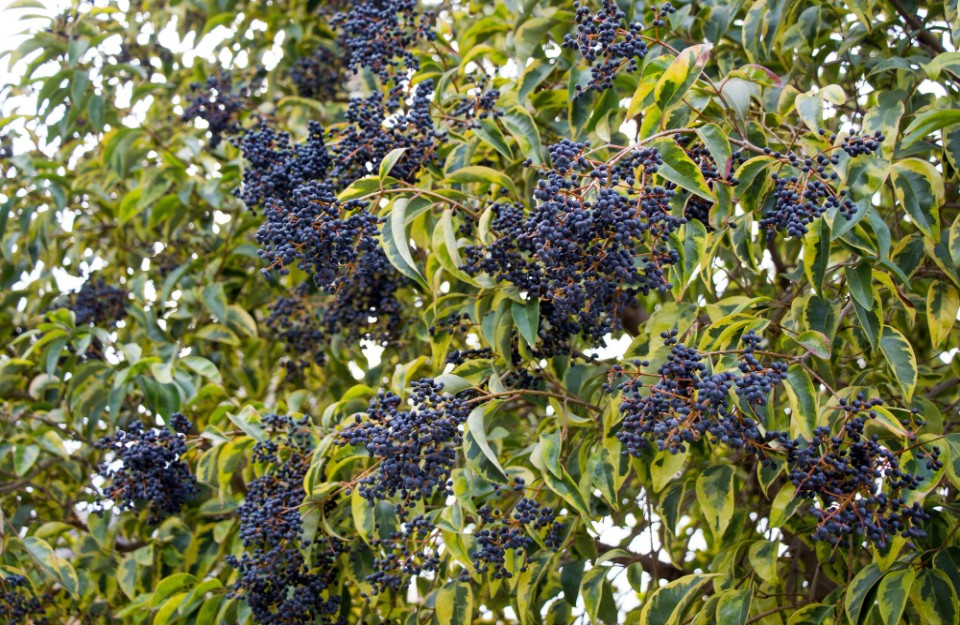
After being planted, a Jamun tree yields fruit for around 50 to 60 years. Jamun production is primarily concentrated in India globally. Jamun is alternatively known as Jamali, Blackberry, Rajman, and Kala Jamun. Its cultivation is most prominent in the states of Maharashtra, Uttar Pradesh, Tamil Nadu, Assam, and Gujarat. The tree typically grows to a height of 25 to 30 feet. Apart from being enjoyed fresh, Jamun fruits are utilized in the production of various items including jelly syrup jam, wine, and other products.
Jamun trees thrive in most regions except for cold climates. A temperature range of 20 to 25 degrees Celsius is optimal for the germination of Jamun seeds in the initial stages, while regular temperatures are necessary for the plant's growth. Frost poses a threat to Jamun plants during the winter months.
Jamun cultivation is widespread across various regions. To succeed, it's crucial to select suitable seeds or plants, consider the appropriate climate, and ensure proper soil conditions. Regular watering, balanced fertilizer application, and attentive plant care with adequate nutrition are vital aspects of cultivation. By employing correct techniques and effective management practices, growers can achieve satisfactory profits. Although Jamun can be cultivated in various fertile soils, land with good drainage is preferred for optimal growth. Harsh soil conditions are detrimental to its development.
To initiate Jamun cultivation, the first step involves preparing its saplings. You can either raise the saplings in a nursery or purchase them. Commence by deeply plowing the field thoroughly using a plow that effectively turns the soil. After plowing, apply cow dung manure across the field, then plow again using a rotavator. Create planting beds by leveling the soil and maintaining a distance of approximately 7-8 feet between them, with beds being around 40-45 centimeters deep. Immediately after planting the saplings, the initial irrigation should be carried out. Subsequently, weed and hoe the area.
Advanced Jamun Cultivation: Varieties such as Goma Priyanka, Katha, Narendra 6, CIISH-J37, CIISH-J45, Konkan Bhadoli, Rajendra 1, and RE Jamun are popular for Jamun cultivation.
Jamun cultivation is ideally conducted from February to July, extending into August. However, it's preferable to cultivate during the rainy season as the plants grow well during this period. Approximately 3 to 4 years after planting, Jamun trees are ready for fruit production.
Irrigation in Jamun Farming: Jamun trees do not require excessive watering, but initially, their seedlings need to be watered. Immediately after planting the seedlings in the prepared beds in the field, the first watering should be done. During the winter season, irrigation should be carried out at intervals of 8 to 10 days. In the summer season, watering should be done every 4 to 5 days for the seedlings.
Black Jamun Cultivation: Farmers undertake black jamun cultivation from June to July. Proper soil, timely water management, and environmental considerations are crucial in its cultivation. Providing fertilizer as necessary is also essential to strengthen the black jamun plants. Various diseases and pests attack the black jamun trees until they bear fruit, so appropriate measures should be taken.
Fertilizers and Manure: Before planting Jamun seedlings in the field, incorporate 10 to 12 kilograms of well-rotted cow dung manure into each prepared bed. Vermicompost manure is also a viable option. Once the plants are fully developed, each one should be given 100 grams of NPK fertilizer three times a year.
Read More... Full Information of Stevia Cultivation, Stevia Cultivation in india
Benefits and Profits from Jamun Cultivation: Jamun enjoys high demand in the markets, leading to substantial profits. It is also utilized in medicinal preparations. Jamun cultivation creates employment opportunities for small-scale workers during harvesting. Jamun plants typically begin fruiting about 3-4 years after planting. Approximately 140 to 150 plants can be cultivated per hectare, with costs amounting to around 1 lakh rupees. Jamun is sold for about 60 to 70 rupees per kilogram in the market, yielding an annual profit of approximately 9-10 lakhs.